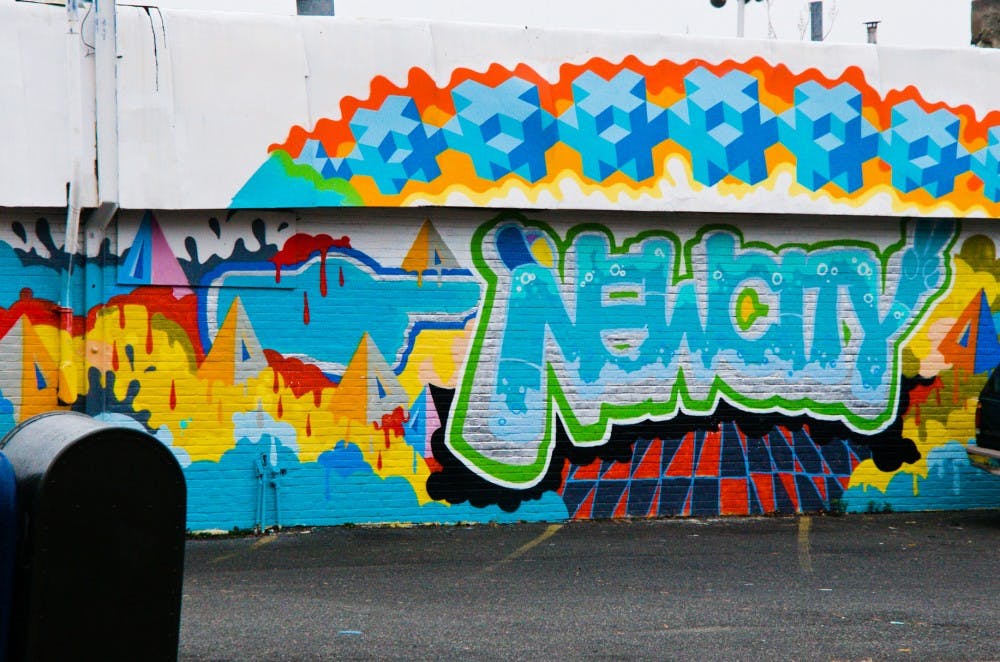While graffiti is on the rise in Philadelphia, Penn professor and Mural Arts Program Executive Director Jane Golden is working with Penn students and the city to create public art that benefits the community.
Numbers clearly show that graffiti is a growing problem in Philadelphia. While only 1,000 requests for graffiti removal were made in 2010, 7,500 were made in 2013 and over 100,000 spaces were cleaned of graffiti that year. In response to this drastic increase, the Mural Arts Program, which began in 1984 as part of Philadelphia’s Anti-Graffiti Network, is providing local artists with more opportunities to help the community while showcasing their work through programs like the Neighborhood Time Exchange.
The recently announced Time Exchange looks to improve West Philadelphia neighborhoods by giving studio space to 12 local artists who promise to engage with the community and work to revitalize the neighborhood. The Mural Arts Program is currently selecting the artists.
“We try to never discount the role of innovation and creativity in doing socially relevant work, since traditional intervention often fails us,” Golden said.
Graffiti and social problems are connected, “since it is not surprising that [graffiti] has come back when there’s a lot of turmoil in the world and inequity in the city,” Golden said. According to the Philadelphia Inquirer’s analysis last week of the U.S Census' American Community Survey, Philadelphia has the highest rate of deep poverty among all large cities in the nation.
Golden also teaches an Academically Based Community Service course at Penn that shows students how mural art can be used for social change. As part of the course, Penn students work with Philadelphia high school students and community groups to design and paint a mural in the neighborhood.
To celebrate October as Mural Arts Month, the Mural Arts Program is also hosting a talk on Oct. 14 about how art can improve the structure of a city.
These efforts speak to the Mural Arts Program’s belief that collaborative community-based art makes “the process of creating just as important as the piece itself,” Golden said.
In contrast, graffiti artists take a one-sided approach that “turns their work into vandalism when it fails to incorporate input from the community,” said Thomas Conway, deputy managing director of Philadelphia’s Anti-Graffiti Network.
“I understand artistic expression and even the lure of transgression and the excitement of claiming spaces, but you cross a line when it becomes illegal,” Golden said. “It becomes contentious when you haven’t been invited into the space.”
Philadelphia spends about $1.4 million each year on personnel, equipment and supplies used to remove graffiti. The city focuses more on cleanup than prevention since graffiti is deemed “a problem in all cities that is just never going to go away,” Conway said.
Graffiti artists have become bolder in reaching subway tracks and other city spots that are harder for the cleanup agency to access — a serious concern for the city considering that “it spreads and invites more graffiti around it when it is left untouched,” Conway said.
Besides wasting taxpayer money for cleanup, graffiti “presents an image of disorder, blight and crime regardless of the perpetrators’ intentions,” Philadelphia Streets Commissioner David Perri said.
Property values also decrease because illicit street art "scares away potential buyers," School of Design professor Thomas Daniels said.
“The best deterrent against graffiti is to have a city that has lots of opportunities for young people with great public art and a vibrant feel that embraces the creative process,” Golden said.



